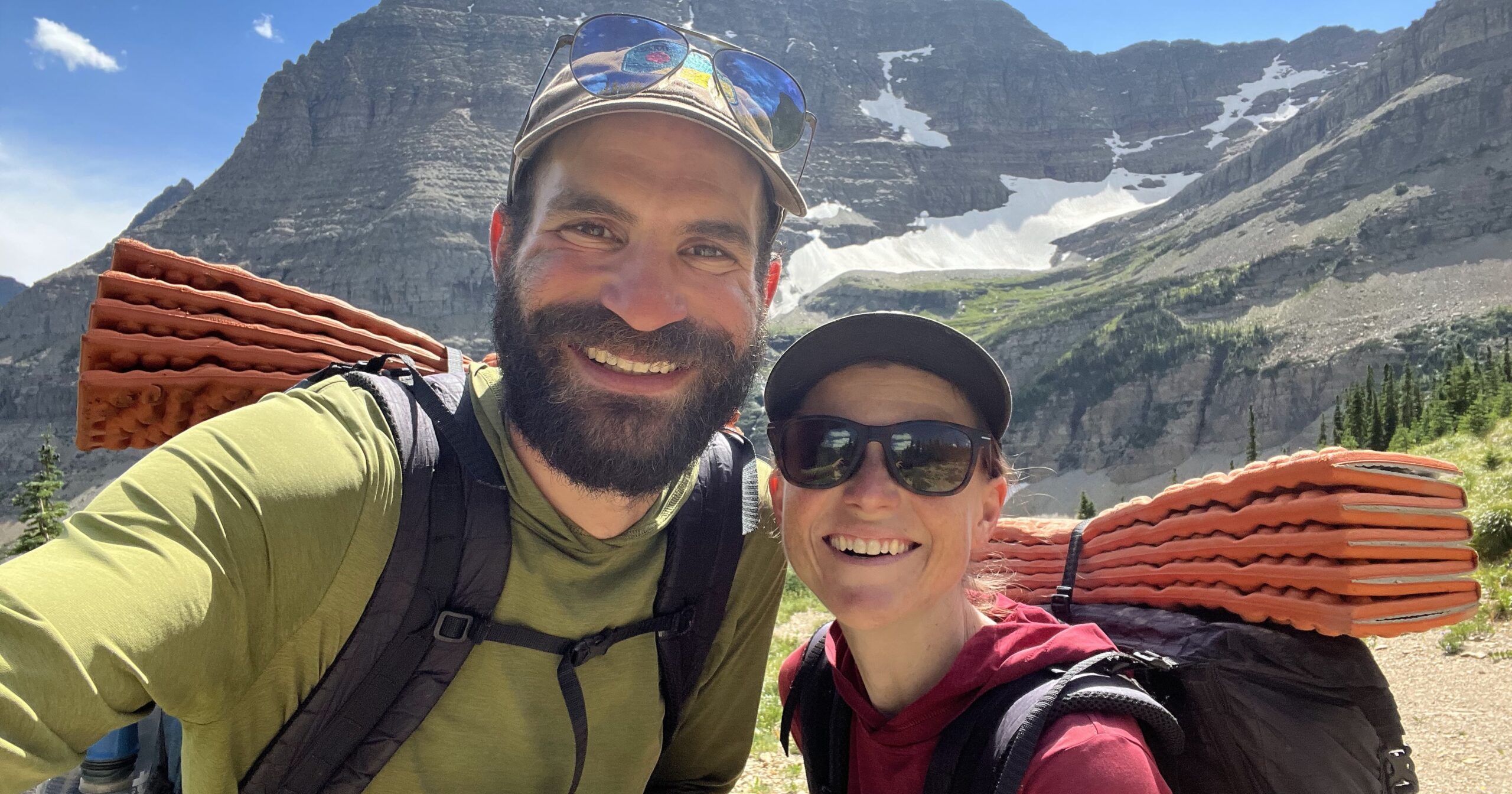:upscale()/2023/02/24/676/n/1922729/tmp_zrb1FL_4173dcf5278cf965_IMG_2779.jpg)
:upscale()/2023/02/24/676/n/1922729/tmp_zrb1FL_4173dcf5278cf965_IMG_2779.jpg)
Renee Miller and Tim Beissinger (better known as @Thruhikers) is always down for an adventure. Back in 2022 they decided to do something different and documented a large journey through a canoe and Hiking path Called Pacific Northwest Circuit (PNC). In just 106 days, they covered over 2,700 miles, all while sharing their journey with an eager Tiktok audience of over two million people.
The couple did not hold back any details. They thoroughly explained how they planned and dehydrated their meals, how they crossed streams and carried their canoe and even how Miller succeeded with its period While on the track.
These videos proved to be extremely informative, but one of the couple’s most popular videos of this time was a tictoch that detailed exactly how their bodies changed throughout their journey. IN October 2022 TiktokMiller and Beissinger explain what happened to their bodies after exercising an average of nine hours and 15 minutes a day for three and a half months in a row. The video has since collected over seven million views and one million likes. Read on to get all the details, plus some of the couple’s largest takeaways.
What exercise did they do?
After seeing the two taking such a huge physical challenge, more than one commentator wanted to know: “How much weight did you lose?” So, Miller and Beissinger detailed exactly how so much exercise changed their bodies – and their message was beyond refreshing. “Many people asked if we lost weight – it was a common question we got on our videos,” Miller tells PS. “But we realized it was more than just weight loss. Our bodies were changing. ”
“It was more than just weight loss. Our bodies changed.”
Miller and Beissingers PNC -RUT first involved hiking about 1,600 miles over 72.5 days, from the northwestern state of Washington up to Canada (that’s about 20 miles per day). Then they paddled a canoe along the entire Columbia River out to the Pacific and covered about 1,200 miles in another 33.5 days (about 35 miles per day).
How was their diet?
“Something else we have documented about both of these hikes, as many people on Tiktok saw, was how much we eat in one day when we are out,” Beissinger tells PS. “This is not a weight loss trip; it is more an eating-all-in-syn,” he adds and estimates that he eats about 4,000 calories every day just to physically drive the journey. In the beginning, Beissinger and Miller say they struggled to eat enough. For starters, the large amount of training makes you less Hungry, says Beissinger. But “after two months of being out there you are just always hungry and always need more,” says Miller.
How did their bodies changed?
The couple detailed how to walk as long as the feet (they were both a full shoe size bigger at the end); How to be outside gave them tans even though they carry sunscreen; How Bushwhacking left them with random cuts and bruises; And how walks and paddling gave them blisters, then Kallus on their feet and hands.
They also acknowledged that during their journey they both lost almost all their body fat and “began to look pretty straight,” as Beissinger says in Tiktok. But They built musclesalso. First in the legs while the mostly walked, then in the arms during the canoe part of the trip.
After about a week of paddling, Beissinger says he actually shocked himself while changing a shirt. “It was this gigantic growth on my arm, which was my muscle,” laughs Beissinger. “I felt like a muscle man. It really surprised me when I realized that my muscles grew in directions they have never grown before.” In the end, they both came home only five kilos lighter, as they had lost a lot of body fat but got a lot of muscle.
:upscale()/2023/02/24/679/n/1922729/tmp_ANaiN7_4efe59c101020fd4_IMG_3422.jpg)
:upscale()/2023/02/24/679/n/1922729/tmp_ANaiN7_4efe59c101020fd4_IMG_3422.jpg)
What happened afterwards?
The two were careful to point out that these changes were not permanent. “Now we are both back at work sitting in front of computers all day. It is unrealistic to maintain the bodies we have built, but we try to keep shape between travel by training outdoors at least once a day,” Beissinger said on Tiktok.
The hikers still say that their transition back to desktop jobs was not easy. “There is a phenomenon that people call” post-trail blues “, which is when you change from being out on one of these super-long tracks,” says Beissinger. “You’re just so happy. It’s so fun. And then normal life may feel everyday and boring.”
He still went through this adjustment period from November 2022. “When you walk 25 miles a day every day you always feel that you have achieved something,” says Beissinger. “At work, a few days I feel I have accomplished something, and other days I feel that I did not. It’s only part of life, but it can be difficult to get used to it again.”
And yes, losing their muscle-body building since returning has been sad. . . But that was also expected. “It’s fun to feel like a superhero when it comes to fitness,” says Beissinger. “But as we said in that video, we accept that it is not realistic and it is not a good ideal to strive for because we cannot – no one – look like they are on their top fitness 365 days of year.”
Takeaways
The couple’s sincere strategy for the weight loss issue is refreshing. Especially when you think about everything Fitfluencers To tell us that training must be first and foremost a tool for weight loss. Thru Hiker’s message acts as a reminder that movement for many is not just a way to change your physique. In fact, it can (and should) fulfill in itself. For not speaking, bodies will Fluctuates (as well as your level of activity), and it’s ok. You don’t even have to hike 2,700 miles to know that.
– Further reporting of Chandler Plante
Lauren Mazzo Was senior fitness editor at PS. She is a certified personal trainer and fitness nutrition specialist through the American Council on Apport.
Chandler Plante (She/her) is the assistant health and fitness editor for PS. She has over four years of experience in professional journalism, who previously worked as an editorial assistant for the magazine People and contributes to Ladygunn, Millie and Bustle Digital Group.





